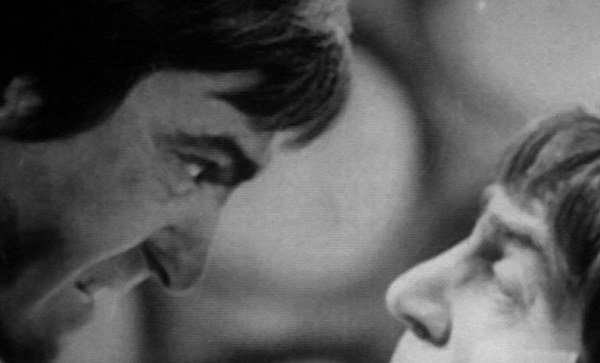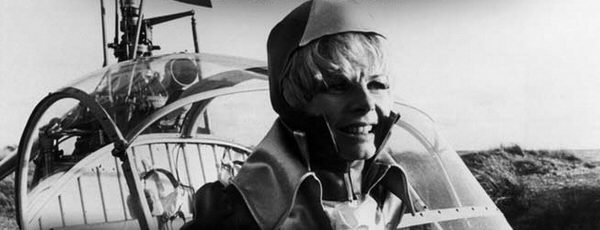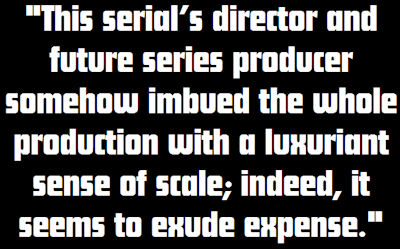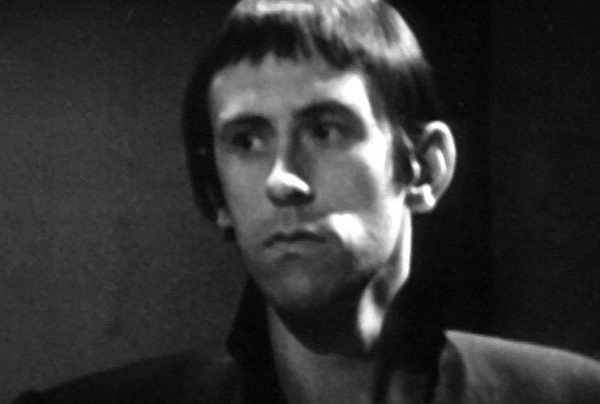|
.jpg)
23RD DECEMBER 1967 - 27TH
JANUARY 1968
(6 EPISODES)



The Enemy of the World
is perhaps best known for being the one serial of the 1967/68
run not to feature any sort of typical monster or alien menace. David
Whitaker’s unusual script instead takes the key tenets of the ‘historical’
format last employed in The Highlanders, and shifts them into a
near future that’s reminiscent of early James Bond films – a future
that’s overcast by the dictatorial shadow of Salamander, the second
Doctor’s unlikely doppelganger and quintessential Bond villain.

As five of this serial’s six episodes have been lost in time, a facet of
it that’s often overlooked is Barry Letts’ stunning cinematography. This
serial’s director and future series producer somehow imbued the whole
production with a luxuriant sense of scale; indeed, it seems to exude
expense. John Cura’s Episode 1 telesnaps, for instance, evidence a
spectacular, filmic chase across an Australian beach that featured
hovercrafts and helicopters. The Enemy of the World’s opening
instalment was also the first to be shot with a picture resolution of 625
lines instead of just 405, helping to afford it that little bit of extra
sheen, even in telesnap form.

“It
was you… or someone
like
you.”
 In fact, in production terms, The Enemy of the World has but two
flaws. Firstly, the need to avoid recording breaks ruled out frequent
costume changes for Patrick Troughton, the upshot of which was that the
Doctor features rather less in the action than would normally be the case.
Of course, Troughton’s thoroughly deplorable turn as Salamander more than
makes up his cosmic hobo’s absence, but we can still lament the dearth of
interaction between the story’s hero and its villain, who don’t actually
meet face to face until the final episode’s dénouement. I understand that
they were scripted to meet earlier in the tale, but the film jammed in the
camera being used to shoot the split-screen effect. In fact, in production terms, The Enemy of the World has but two
flaws. Firstly, the need to avoid recording breaks ruled out frequent
costume changes for Patrick Troughton, the upshot of which was that the
Doctor features rather less in the action than would normally be the case.
Of course, Troughton’s thoroughly deplorable turn as Salamander more than
makes up his cosmic hobo’s absence, but we can still lament the dearth of
interaction between the story’s hero and its villain, who don’t actually
meet face to face until the final episode’s dénouement. I understand that
they were scripted to meet earlier in the tale, but the film jammed in the
camera being used to shoot the split-screen effect.
.jpg)
“Which is good, and which is bad?”
Whitaker’s narrative is as ambitious as Letts’ quixotic direction, taking
place all over the world, and, insofar as possible, resisting the
temptation to fashion blacker-than-black heels and whiter-than-white
babyfaces. Such aspects are typified by the serial’s second episode, which
takes place in both the Central European and Australian zones (singular
countries, it seems, have long-since fallen by the wayside) and presents
the Doctor, Jamie and Victoria with an intriguing dilemma as they must
weigh their new friends’ assertions that Salamander is a tyrant against
all the evidence to the contrary.

“Some
people spend their time making nice things,
and
other people come along and break them.”
Inevitably though, it is the third episode of The Enemy of the World
that people will be most familiar with as it still survives today and was
recently released as part of the Lost in Time DVD collection. Its
endurance may be why this serial is so often derided, as the slow and
studio-bound episode lacks the action and scale of the first two, choosing
instead to revel in the mundane misadventures of Deborah Watling’s
Victoria. Judging from the surviving Frazer Hines-narrated soundtrack of
the fourth episode, things didn’t improve much there - whilst Watling’s
wailing Victoria is propitiously absent, so is Hines’ gung-ho Jamie, and
the subterranean setting only seems to emphasise how firmly entrenched in
exposition the plot has become. There aren’t even any telesnaps available
to embellish the surviving soundtrack and help stir the imagination.

.jpg) The serial’s final two episodes mark a glorious return to form, however,
buoyed by the awesome performances of Patrick Troughton, Frazer Hines and
two actors who would go on to play Gallifreyan Castellans: George Pravda,
who plays the disgraced politician Denes; and Milton Johns, who plays the
nefarious Benik. Punctuated by unforeseeable twists and turns and
culminating in a sensational climax, The Enemy of the World’s final
third exemplifies Whitaker’s writing at its best, and segues delectably
into the opening of an adventure that many would argue was amongst the
second Doctor’s greatest. The serial’s final two episodes mark a glorious return to form, however,
buoyed by the awesome performances of Patrick Troughton, Frazer Hines and
two actors who would go on to play Gallifreyan Castellans: George Pravda,
who plays the disgraced politician Denes; and Milton Johns, who plays the
nefarious Benik. Punctuated by unforeseeable twists and turns and
culminating in a sensational climax, The Enemy of the World’s final
third exemplifies Whitaker’s writing at its best, and segues delectably
into the opening of an adventure that many would argue was amongst the
second Doctor’s greatest.
Despite its languid middle, The Enemy of the World is a distinctive
and daring tale, and one that I dare say holds its own against many of
Troughton’s finest. If you can swallow the dubious conceit that, just as
the first Doctor had his evil doppelganger in the 16th century, the second
Doctor has his in the 21st, and possess the patience to meticulously marry
up John Cura’s telesnaps with the BBC Radio Collection’s soundtrack and
the Lost in Time DVD, then you’re in for one hell of a trip around
the world.
|